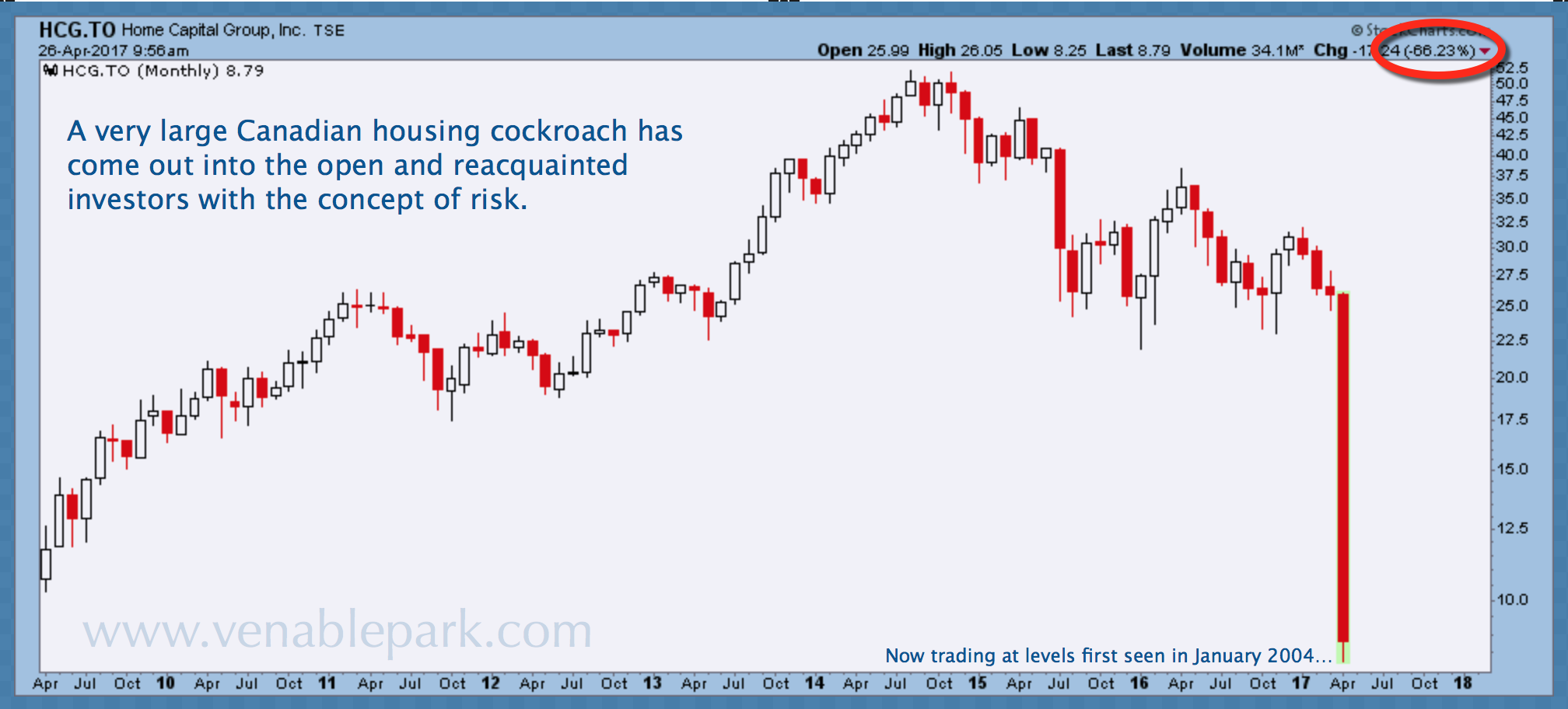Canada enjoyed elevated cash flow during the late, great, global commodity boom 2002-2011. That was then. Cash flow is cyclical, and that cycle is over. Unfortunately, Canada is unprepared for the secular mean reversion that follows secular booms. Thanks to over-confidence and malinvestment in highly inefficient assets like the Alberta tar-sands, egregiously priced real estate and non-productive consumer goods, Canada has now earned an extended rough patch in the payback period.
This chart since 2009 of Canada’s largest non-bank mortgage lender Home Capital Inc tells the story. Home Capital shares ballooned with the household debt bubble into 2014 and have since lost 86% on revelations of widespread fraud and management cover ups. This darling of the Canadian housing boom, may well be a canary in the coal mine, reminding of what happens when excess leverage and reckless risk-taking becomes a national obsession.
Dangerously undiversified, the bloated financial sector today makes up 34% of the Canadian TSX Index, while energy and materials make up another 33%. Healthcare is just 0.5% and technology 2.9%.
The chief strategist for Canada at BlackRock Inc., the world’s largest money manager, admits that he doesn’t see a single attractive sector in the Canadian stock market because oil prices will stay low and the rest of our economy is over-levered and floundering. See: World’s biggest fund sees nothing to like in Canada stocks.
We agree. It will take significant price declines across Canadian stocks and many realty markets, before Canadian assets are attractive investments once more. Fortunately for those who are prepared, those opportunities are coming. Unfortunately, most Canadians are oblivious and will not be able to take advantage of better prices when they present.



